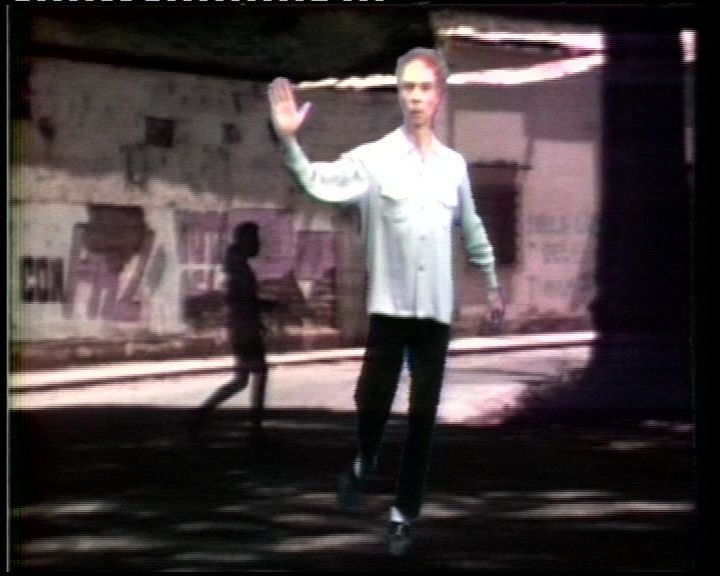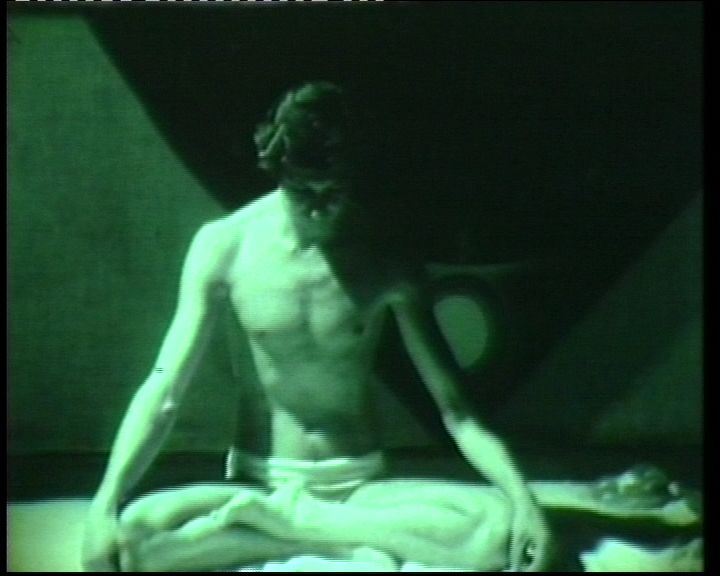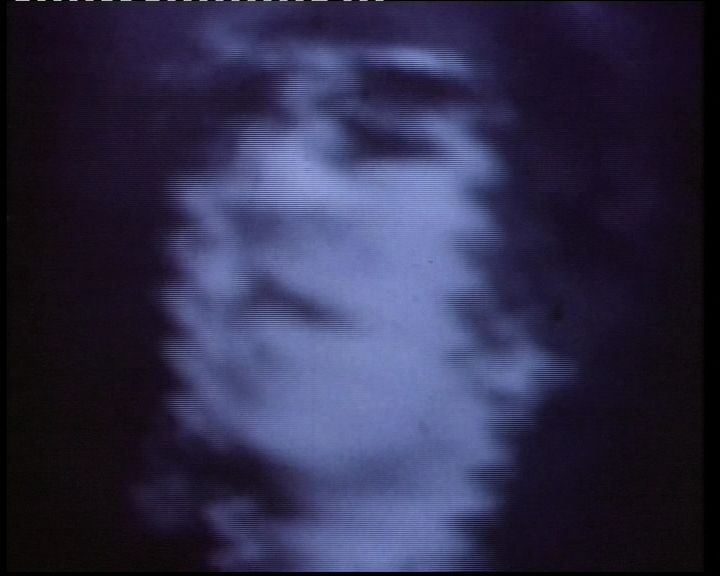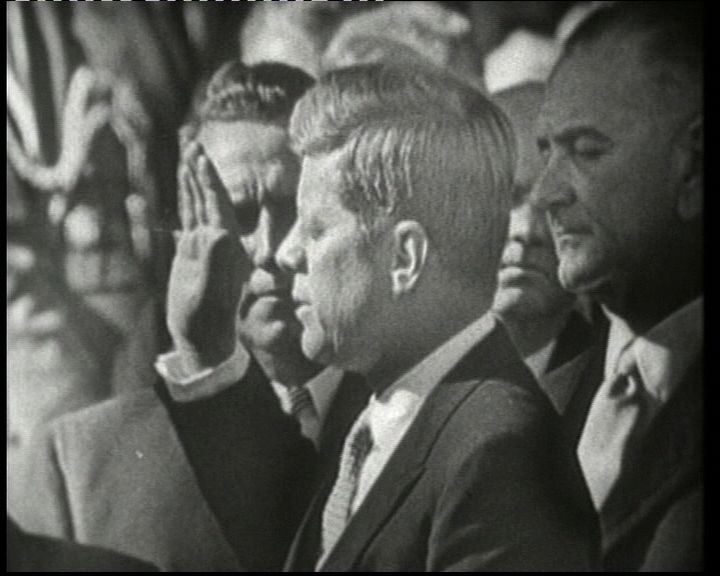Nam June Paik
After studying music and philosophy in Japan, Nam June Paik collaborated with the avant-garde composer Karlheinz Stockhausen in Cologne and took part in Fluxus performances and events using musical instruments, such as “prepared pianos,” and modified television equipment. It was in Germany, precisely when Fluxus was at its apex, where Paik met and collaborated with artists such as Joseph Beuys and Wolf Vostell, but it was his encounter with John Cage that unleashed new ideas and a complete, renewed outlook on art. After arriving in New York in 1964, Paik “discovered” the Sony Portapak portable video camera and started making videos. It was in New York that Paik embarked upon a collaboration, destined to last years, with the avant-garde cellist Charlotte Moorman, with whom he realized numerous works of performance that, at the time, were considered scandalous.
By adopting a series of ironic and disarming artistic modalities, Paik developed an approach that deconstructs and mixes the flowing of images, re-creating the language of the television communication universe. Establishing a vision marked by theories of global communication, with a sensitivity and creativity that absorbs the somewhat confrontational side of Pop Art, his work explores the sudden transitions and junctions between mass art and culture in an age where the medium is the message.
Following his initial works dealing with the modification of electronic signals by means of magnets placed on television sets, he arrived at innovatory works thanks to the video synthesizer, a piece of equipment he had developed as early as 1969, together with electronics engineer Shuya Abe.
By re-elaborating heterogeneous materials with a “neo-Dada” spirit and irony Paik created a radical synthesis of video language based on the audiovisual grammar and syntax of television, while at the same time transforming its language.
The artist’s network of friendships and artistic references—John Cage, Merce Cunningham, Allen Ginsberg, Allan Kaprow, Julien Beck, and Judith Malina of the Living Theatre—have been progressively cited in richly constructed works in which the recurrent and emblematic themes and motifs of Pop iconography are alternated with figures of the international avant-garde. [F.B.]
List of Works
Rare Performance Documents 1961–1994. Volume 1: Paik-Moorman Collaborations, 1961-1994, compiled in 2000
video, black and white, color, silent and sound, 25 min. 08 sec.
Purchased with the contribution of the Compagnia di San Paolo
Performance Documentation, Aachen, Germany, 1965
video, black and white, silent, 4 min. 14 sec.
Silent recordings of the preparation of the musical and performance events held by Paik and Charlotte Moorman in a university room in Aachen in 1965.
Charlotte Moorman at the Howard Wise Gallery, 1969
video, color, silent, 1 min. 43 sec.
Brief color fragments of Moorman playing the cello and assorted percussion instruments during a performance in a private gallery.
TV Bed, The Everson Museum of Art, 1972
video, black and white, sound, 1 min. 10 sec.
Scenes of Charlotte Moorman playing her cello and talking with the public while stretched out on a surface made up of television monitors.
TV Cello Performance, 1973
video, black and white, silent, 1 min. 42 sec.
Extracted from a performance by Moorman who is playing the cello (while Paik is busy smoking). Composed of various turned-on TV screens.
Waiting for Commercials (Performance), 1972
video, black and white, sound, 8 min. 20 sec.
Moorman with her cello and David Behrman at the piano alternate playing pieces of classical music during a television broadcast in which a video by Paik created with commercials is shown.
New Television Workshop Performance, 1971
video, color, sound, 7 min. 25 sec.
Moorman, after her entrance “on all fours” and dressed in military uniform, has her cello on her back. First she plays her instrument, then a bomb, and then Paik’s back.
Rare Performance Documents 1961–1994. Volume 2, 1961–1994, compiled in 2000
video, black and white, color, silent and sound, 18 min. 37 sec.
Purchased with the contribution of the Compagnia di San Paolo
Hand and Face, 1961
video, black and white, silent, 1 min. 42 sec.
With a close-up shot on a completely white background, Paik passes his hand across his face, forehead, and eyes in an engrossed ritual.
Fluxus Sonata at Anthology Film Archives, 1975
video, black and white, sound, 6 min. 12 sec.
On a series of record players and gramophones Paik plays some old records he then systematically breaks into pieces.
Violin Dragging, Brooklyn, NY, 1965
video, color, sound, 1 min. 37 sec.
The artist drags a violin tied to a piece of string through streets and fields.
Tribute to GM (aka Video Venus), 1978
video, color, sound, 2 min. 56 sec.
The artist performs a score on a piano while a naked woman is seated on the same piano.
Nam June Paik with The Bad Brains, 1991
video, color, sound, 1 min. 19 sec.
Paik is seated next to the drums of the musical group during one of their concerts held at the American Museum of Moving Images (September 14, 1991).
An Evening with Nam June Paik at The Kitchen, 1994
video, color, sound, 4 min. 35 sec.
The artist plays the piano while a large screen projects images filmed with a micro video camera he has with him.
Button Happening, 1965
video, black and white, silent, 2 min.
Purchased with the contribution of the Compagnia di San Paolo
In a half-bust view of rapid and synthetic recording, the artist buttons and unbuttons his jacket.
Video Synthesizer and “TV Cello” Collectibles, 1965–1971
in collaboration with Jud Yalkut
video, color, silent, 23 min. 25 sec.
Purchased with the contribution of the Compagnia di San Paolo
Early Color TV Manipulations, 1965–1971
video, color, silent, 5 min. 18 sec.
Color elaboration of TV signals.
Video Commune (Beatles from Beginning to End), 1972–1992
video, color, silent, 8 min. 36 sec.
These period recordings by Jud Yalkut represent the earliest documentation of Paik’s interventions: first with magnetized television monitors and then with his first interactive performance in the WGBH television studio in Boston.
This video also marks the “on air” debut of Paik’s video synthesizer—Abe/Paik—that took place in August 1970.
TV Cello Premiere, 1971
video, color, silent, 7 min. 25 sec.
This film is the precious documentation of Paik’s first TV Cello performance together with Moorman at the Bonino Gallery in New York in 1971.
Digital Experiment at Bell Labs, 1966
video, black and white, silent, 4 min.
Purchased with the contribution of the Compagnia di San Paolo
Permitted to use the Bell Company laboratories, Paik creates a short but essential—almost minimal—experiment with electronic images in which numbers and dots move on a black background.
Film Video Works #3, 1966–1969
in collaboration with Jud Yalkut
transferred from 16 mm film, video, black and white, color, silent and sound, 5 min. 36 sec.
Purchased with the contribution of the Compagnia di San Paolo
Missa of Zen, 1966–1969
transferred from 16 mm film, black and white, color, silent, 2 min. 28 sec.
Fragmentary images giving a sense of a phantasmic presence appear on a television screen, filmed from an oblique viewing point. Their moving presence on the screen is rendered even more abstract by the distance and darkness that surrounds them.
Electronic Moon, 1966–1969
video, black and white, color, sound, 3 min. 08 sec.
Artificially colored images of the moon are accompanied by Glenn Miller’s famous “Moonlight Serenade.”
Video-Film Concert, 1966–1972
in collaboration with Jud Yalkut
video, black and white, color, sound, 34 min. 50 sec.
Purchased with the contribution of the Compagnia di San Paolo
Video Tape Study #3, 1966–1969
video, black and white, sound, 4 min.
Images of a press conference held by the President of the United States, Lyndon Johnson, and the Mayor of New York, John Vliet Lindsay, are distorted and manipulated.
Beatles Electroniques, 1966–1969
video, black and white, color, sound, 3 min.
In this short video, Paik manipulates and modifies the presences of the most famous pop stars of the sixties.
Electronic Moon #2, 1969
video, color, sound, 4 min. 30 sec.
With a piece by Debussy heard in the background, Paik re-elaborates images of the moon.
Electronic Fables, 1966–1972 and 1992
video, black and white, color, sound, 8 min. 45 sec.
This work mixes elaborations of images with sound fragments of sentences by John Cage.
Electronic Yoga, 1972–1992
video, black and white, color, sound, 7 min. 30 sec.
Images of a person in the lotus position are alternated with figures of colored abstractions.
Waiting for Commercials, 1972
video, color, sound, 6 min. 45 sec.
Constructed as a condensed collection of Japanese TV commercials of the early seventies, this work is one of the first examples of Paik’s ironic approach to appropriating television images of consumer products in order to re-present them as objects of Pop Art.
9/23/69: Experiment with David Atwood, 1969
in collaboration with David Atwood, Fred Barzyk, and Olivia Tappan
video, color, sound, 80 min.
Purchased with the contribution of the Compagnia di San Paolo
Produced by Paik while a guest artist of the WGBH television channel in Boston, this work was integrally televised only in recent years. The title refers to the date of the broadcast: September 23, 1969. This visual collage is a blend of spontaneous experimentation, which combines electronic manipulations of pre-existing television material and pure abstractions, including images filmed live in the TV studio. The result is a multiform and amalgamate visual and sound symphony.
Global Groove, 1973
in collaboration with John Godfrey
video, color, sound, 28 min. 30 sec.
Purchased with the contribution of the Compagnia di San Paolo
Characterized by an inexhaustible sound and visual rhythm, this video shows a series of dancers engaged in performing the most varied styles—from rock’n’roll to jazz, contemporary, tap, and traditional Korean dances—along with the alternating and unexpected appearance of Allen Ginsberg, John Cage, or Jud Yalkut interviewing Charlotte Moorman. The continuous electronic elaboration and overlapping, together with the incessant presence of the music, produce a sensation of contagious vital energy.
A Tribute to John Cage, 1973 (reedited in 1976)
video, color, sound, 29 min. 02 sec.
Guest: Alvin Lucier.
Performers: John Cage, Marianne Amacher, Richard Teitelbaum, Pulsa, Charlotte Moorman, David Behrman, David Tudor, Cathy Berberian, Jud Yalkut, Francis Lee, David Rosenboom, Jackie Cassen, Stan VanDerBeek, and Alfons Schilling.
Purchased with the contribution of the Compagnia di San Paolo
In this portrait of John Cage, Paik superimposes live performances, interviews, and anecdotal memories with friends and colleagues of the great musician and offers examples of musical executions and works for television with Cage and his aleatoric and participatory research.
Merce by Merce by Paik, 1978
in collaboration with Charles Atlas, Merce Cunningham, and Shigeko Kubota
video, color, sound, 28 min. 45 sec.
Purchased with the contribution of the Compagnia di San Paolo
Part One: Blue Studio: Five Segments, 1975–1976
by Charles Atlas and Merce Cunningham
video, color, sound, 15 min. 38 sec.
A series of short choreographies expressly carried out by Cunningham for the video shows the dancer multiplied on the screen, accompanied by a sound collage of the voices of John Cage and Jasper Johns.
Part Two: Merce and Marcel, 1978
by Shigeko Kubota and Nam June Paik
video, color, sound, 13 min. 05 sec.
Paik and Kubota dedicate the second part of the work to the relationships among art, movement, and gesture while the question “This is dance?” is repeated. Included in the video are aerial images of the streets of New York and a baby’s first steps.












